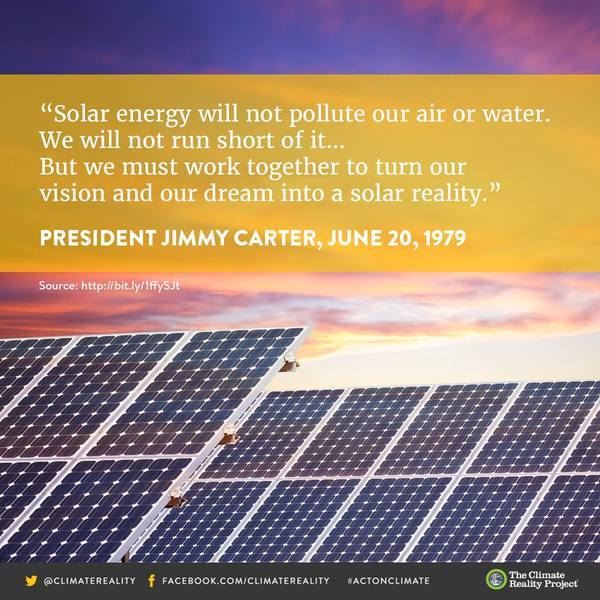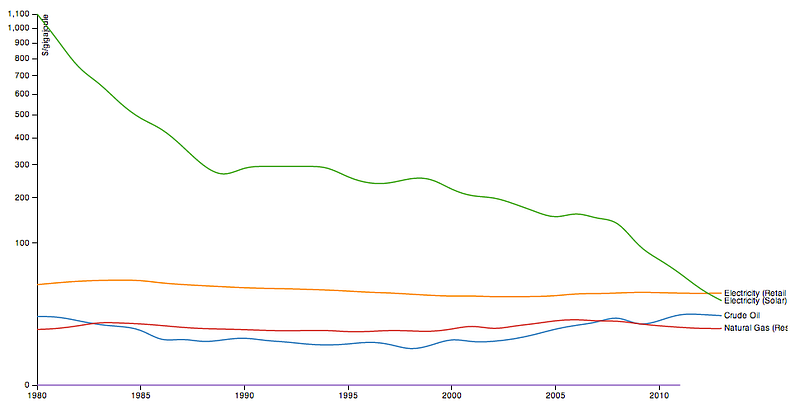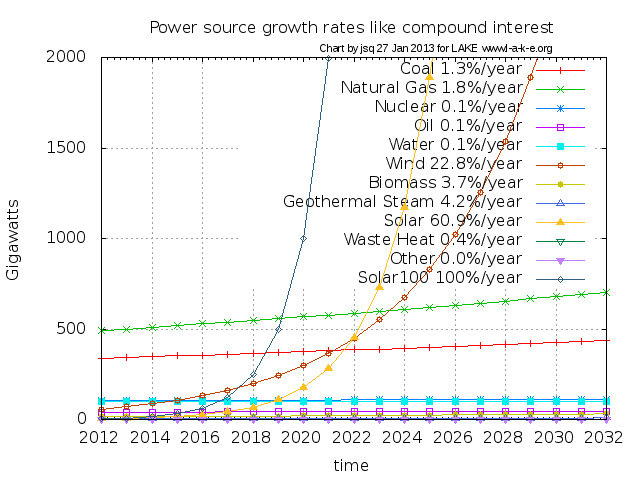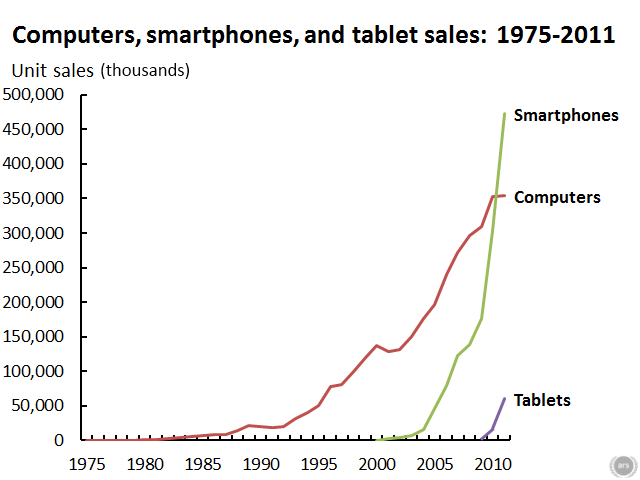U.S. president Jimmy Carter had a dream,
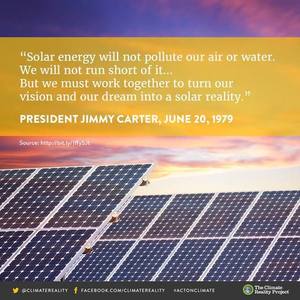 thirty six years before Pope Francis spelled out why we all need to escape a dark hot nightmare,
and Jimmy Carter’s sunny dream is now coming true.
thirty six years before Pope Francis spelled out why we all need to escape a dark hot nightmare,
and Jimmy Carter’s sunny dream is now coming true.
Today, in directly harnessing the power of the Sun, we’re taking the energy that God gave us, the most renewable energy that we will ever see, and using it to replace our dwindling supplies of fossil fuels.
Nowadays the problem is too much fossil fuel supply, due to tar sands and fracking, both massively destructive in extraction, pipelines, and export, and if burnt enough to cook the world in climate change.
Way back then part of the solution was already economically viable. President Jimmy Carter, 20 June 1979, Solar Energy Remarks Announcing Administration Proposals,
There is no longer any question that solar energy is both feasible and also cost-effective. In those homes now using electricity, a typical solar hot water heating system, such as the one behind me, can pay for itself in 7 to 10 years. As energy costs increase, which is an almost inevitable prospect, that period for paying for this investment will be substantially reduced. Solar energy will not pollute our air or water. We will not run short of it. No one can ever embargo the Sun or interrupt its delivery to us. But we must work together to turn our vision and our dream into a solar reality.
Jimmy Carter concentrated on solar hot water because in 1979 photovoltaic solar power for electricity cost about $40.00 per watt. Even that was already down 48% from $76.67/watt two years before. And that trend continued, down to $0.74/watt in 2013. That’s right: solar PV cost 100 times less in 2013 than in 1977, as you can see in this graph by Bloomberg New Energy Finance via Zachary Shahan, Clean Technica, 24 May 2013, Solar Power’s Massive Price Drop (Graph),
At those kinds of prices solar PV installations now also pay for themselves in 7-10 years. The City of Valdosta expects their most recent megawatt of solar panels at the Mud Creek Wastewater Treatment Plant to pay off in 5 years.
And prices keep dropping, not just for the bare panels: also for complete installations. Mike Munsell, Greentech Solar, 13 March 2015, Solar PV Pricing Continues to Fall During a Record-Breaking 2014: “Total installation costs for utility and large commercial systems,” writes GTM Research Director MJ Shiao, “are now below 2011 module costs.”
Solar prices will keep dropping. Giles Parkinson, Clean Technica, 29 January 2015, Solar Costs Will Fall Another 40% In 2 Years. Here’s Why.
It’s been one of the big themes at the World Energy Future Conference here in Abu Dhabi. Solar, and other technologies such as wind power, are no longer more expensive than traditional fossil fuels in many parts of the world. Indeed, they are cheaper.
The big oil and gas players recognise this. Dr Adaba Sultan Ahmed al Jabber, the minister of state of the United Arab Emirates, said at the lavish opening on Monday that the cost of solar was competing with traditional sources of energy, and would not be derailed by the plunge in the oil price.
He saw that as an opportunity to call for the removal of fossil fuel subsidies, which he noted outstripped those of renewables by a factor of 5:1 in 2013. “If we have courage and opportunity to saying yes to thinking differently, could deliver better future,” he told the conference. This from a country which is in the top eight oil producers in the world, and the top seven in gas reserves.
A day earlier, the International Renewable Energy predicted that solar costs would fall substantially in coming years, underlying its competitiveness with fossil fuels. If government policy makers did not understand this, IRENA said, then they risked making bad decisions about their energy future.
These popularizations are coming from Clean Technica and GreenTech Solar, but their sources are normally conservative if not reactionary finance firms like Bloomberg and Deutsche Bank and oil producers such as Abu Dhabi.
Most governments and people don’t understand exponentially changing anything, so here’s another graph. Brian McConnell, Medium.com, 23 April 2013, a Disruptive Technology Looks Like.
A picture is worth a thousand words. The graph above compares the price history of solar energy to conventional energy sources. This is what a disruptive technology looks like. While conventional energy prices remained pretty flat in inflation adjusted terms, the cost of solar is dropping,fast, and is likely to continue doing so as technology and manufacturing processes improve.
That’s right: in 2013, solar electricity was already cheaper than retail electricity average in the U.S. And at the rate it’s dropping, by 2015 solar electricity is already below crude oil and natural gas energy prices. And it’s not fancy new kinds of solar panels or batteries driving this historical drop; it’s production improvements and economies of scale:
On average, solar power improves 14% per year in terms of energy production per dollar invested. Technological improvements are the primary driver of this trend, as manufacturers learn to produce panels using less energy and raw materials (the basic physics of solar panels are a century old), and to make systems easier to install.
Of course, add to that batteries and even more efficient solar panels and the price improvements and deployments will go even faster. But we don’t even need those for solar power to take over the world.
While solar currently accounts for less than 1% of the energy supply, it is an exponentially improving technology, both in terms of price (14%/year) and pace of construction (60%/year). Already it is approaching parity with other energy sources in the Western US.
 Two years later, parity is here now.
Last year
Bloomberg noticed solar is now cheaper than all other forms of energy,
confirming McConnell’s calculations.
Two years later, parity is here now.
Last year
Bloomberg noticed solar is now cheaper than all other forms of energy,
confirming McConnell’s calculations.
And those prices drive that 60% annual increase in solar deployments. Which is more than doubling every year, as confirmed by the U.S. Energy Information Administration (eia). Which is exactly what former FERC Chair Jon Wellinghoff predicted in 2013. Wellinghoff projected forward, predicting that within ten years solar would overtake wind in total deployments and more U.S. power would come from solar than anything else. Which is what I had predicted a few months earlier, with this graph, projecting from FERC’s own records:
The sunny gold line at 60.9%/year passes wind in 2022 and natural gas in 2023. The real future is somewhere between that and the skyrocketing blue 100%/year line.
Of course, that kind of growth in solar (and wind) power will affect all the other power sources. Already more nuclear power units are closing than are being built. Owen Davis, International Business Times, 10 March 2015, Nearly Every Major Bank Has Ditched Mountaintop Coal Mining. The LNG export boom is going bust. Even
The solar future is so bright it’s turned even Al Gore into an optimist:
“We’re going to win this.
“The only question is how long it takes.”
Sure, some pedants note solar power has its own environmental drawbacks, and it does, although that is fixable and the fixes are being independently monitored. But compared to mountaintop removal, fracking, or gouging pipelines through fields, forests, and wetlands and under rivers? Compared to every thermal power generation (fossil fuels or nuclear) requiring massive amounts of water for cooling? Compared to leaks, explosions, and poisoned rivers and the Gulf of Mexico? There is no comparison: solar power is far cleaner and far less environmentally destructive and far less hazardous.
Back to McConnell, who notes you ain’t seen nothin’ yet:
Assuming this trend continues for another 10 to 20 years, and there’s no reason not to, solar power will become 5 to 10 times more cost effective than it is today. This raises an interesting question. What happens if solar becomes an order of magnitude cheaper than other sources of power?
This is the nature of disruptive technology. It represents such an improvement that it renders existing industries obsolete. We saw waves of disruption take place as the Internet upended entire industries. Expect to see a lot of this in the coming years.
We’re talking about disruptive as in computers, smartphones, and the Internet. Jeremy Reimer, Ars Technica, 14 August 2012, From Altair to iPad: 35 years of personal computer market share.
As I wrote two years ago, Solar power will win like the Internet did. For the same reasons, and so fast most people don’t yet realize what’s happening.
Back in 1979 Jimmy Carter cited yet another precedent:
In 1891, during the Presidency of William Henry Harrison [Benjamin Harrison], electric lights were first installed in the White House, the residence of the leaders of our country. At that time, commercial electricity was not economically feasible, but President Harrison wanted to affirm his confidence in the technological capability of our country.
This afternoon, I’ve arranged for this ceremony to be illuminated by solar power. [Laughter] And I think we’ve done an excellent job in utilizing that tremendous, sometimes untapped resource.
Unfortunately, in the last few years, that confidence that President Harrison expressed in our Nation’s ability to meet new challenges has not always been evident. Lately, as we have begun to see the first signs of inevitable shortages of fossil fuels, our country has been disconcerted, sometimes discouraged. Some few Americans have almost reached a state of panic.
Now, partly because Pope Francis spelled it out for them, people are finally starting to panic about climate change. Yes, Virginia, we are really risking cooking our world, with the poorest people taking most of the damage and the quickest, until 90% of species die off and human civilization is no longer possible. The stakes are that high.
Around here people are starting to notice 100 degree days in June.
 2015 is already the hottest year ever.
I’ve already been through this in Texas. 100 degrees won’t be just
a few days if this goes on: it will be so many days crops will fail.
And that’s just the start of it.
If we burn even a fraction of what the fossil fuel industry wants
to frack out of the ground, by the end of this century those of you
still around won’t recognize this planet.
2015 is already the hottest year ever.
I’ve already been through this in Texas. 100 degrees won’t be just
a few days if this goes on: it will be so many days crops will fail.
And that’s just the start of it.
If we burn even a fraction of what the fossil fuel industry wants
to frack out of the ground, by the end of this century those of you
still around won’t recognize this planet.
But it doesn’t have to be like that. People think fossil fuel’s hot grip on our political processes is so tight we can’t break it. But when even a Georgia governor who took campaign funds from six pipeline companies can sign a solar financing law passed unanimously by both houses of the most corruption-prone state legislature, after squelching similar bills for a decade, that fossil fuel grip is breaking just like big coal’s grip on mountaintops. That same governor even opposed Kinder Morgan’s Palmetto Project petroleum products pipeline and the Georgia Department of Transportation denied a permit. Now we need to get Governor Deal and the state of Georgia to oppose and deny Spectra Energy’s Sabal Trail fracked methane pipeline.
Solar power is winning and fossil fuels are losing their grip for the same reason they got that grip in the first place: profit. Big companies like Georgia Power and its parent Southern Company have recognized there’s a market in solar power and they’re starting to sell it. With those constantly reducing prices, such companies will get sucked into the solar revolution pretty quick, and we can start betting on when even Southern Company will admit their Plant Vogtle nukes and Plant Kemper “clean coal” projects are irrevelant dinosaurs faced with thousands of scampering solar power projects.
Thanks to Stanford Prof. Mark Z. Jacobson and his engineers, we know how to convert the U.S. to 100% clean, renewable energy by 2050. That’s including not only electricity generation and use for current purposes. That’s including transportation and all energy uses, all powered by sun, wind, and water, with no fossil fuels, biomass, or nuclear at all. Sure, 2050 is a bit farther out than 2023, because converting all automobiles, trucks, and airplanes to electric vehicles or powered by solar-generated clean fuels will take a bit longer than just generating electricity.
The report lays out individual roadmaps for each state to achieve an 80 percent transition by 2030, and a full conversion by 2050.
And that’s fast enough to seriously slow down and eventually reverse climate change. Sure, there will still be substantial damage to crops, some plant and animal species will be lost, and unfortunately many people will get displaced by rising seas, desertification, and storms. But maybe Miami won’t drown and Valdosta won’t have beachfront property.
There’s even some chance that solar power will break the grip of big companies on the political process, because solar power (and to a lesser extent wind) is by its nature distributed. Sure, big utilities like to build big solar plants, because those resemble the capacity baseload plants they’re used to. But solar panels are also going on rooftops and soon every parking lot, school, government building, airport, roadway, etc.
 Jimmy Carter’s dream is happening now.
He’s only 90 years old, and it’s only eight more years until
solar power overtakes everything.
Jimmy Carter will be 98 in 2023.
He may live to see his dream realized.
The sun is rising.
Jimmy Carter’s dream is happening now.
He’s only 90 years old, and it’s only eight more years until
solar power overtakes everything.
Jimmy Carter will be 98 in 2023.
He may live to see his dream realized.
The sun is rising.
-jsq
Short Link:
